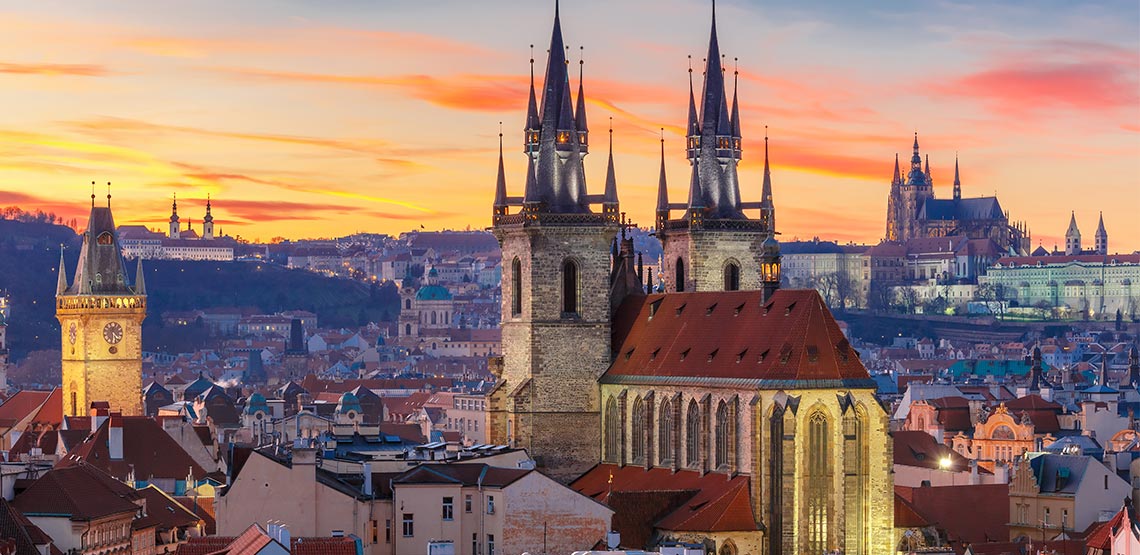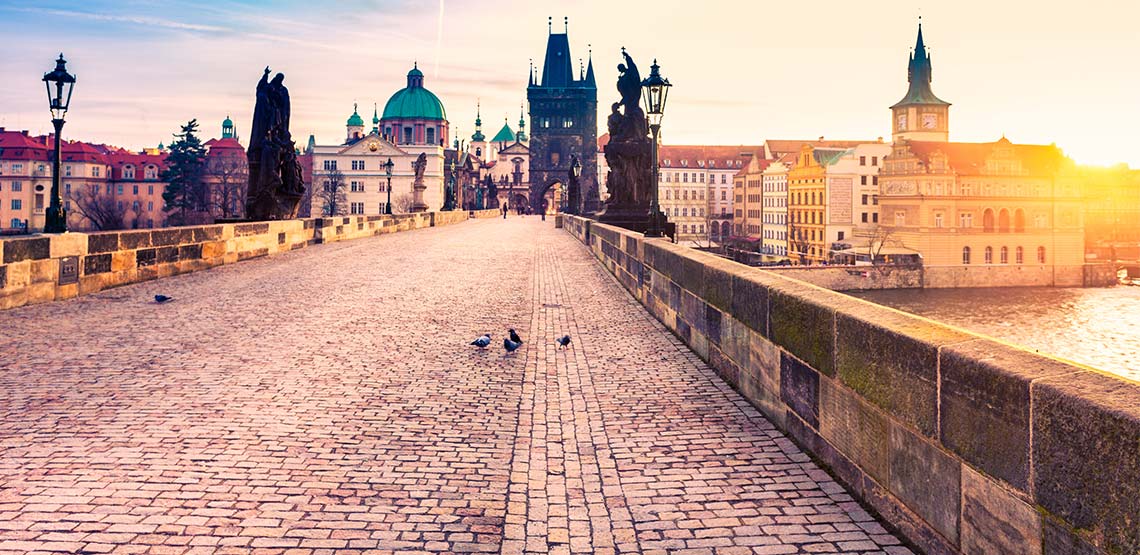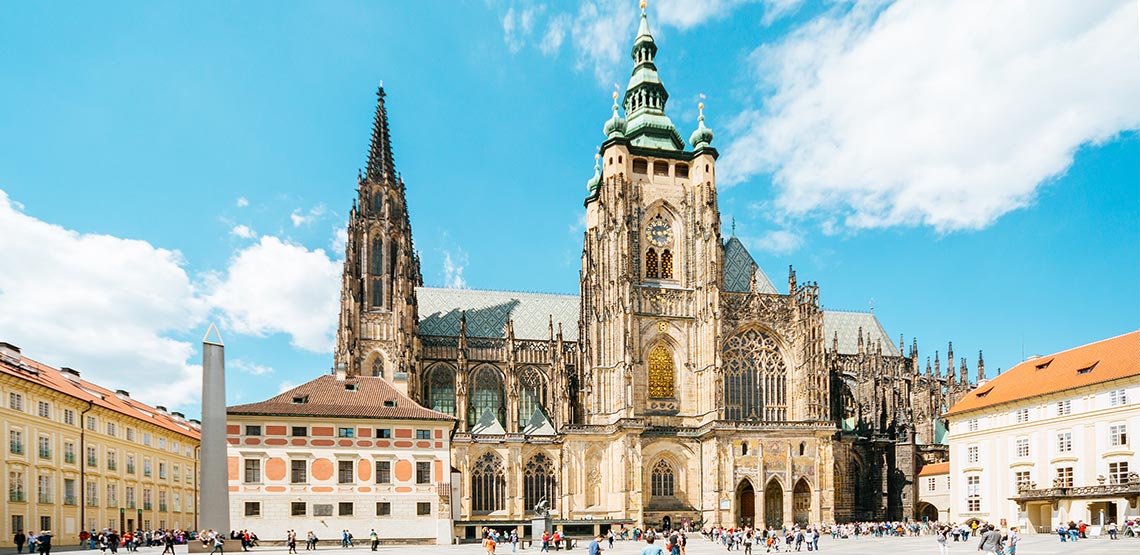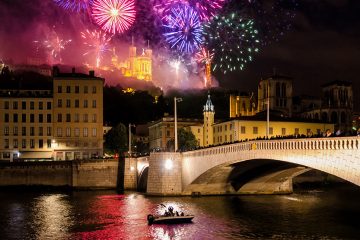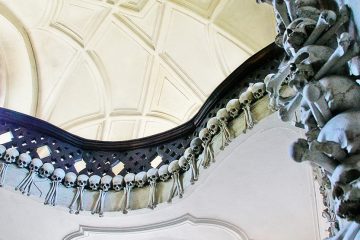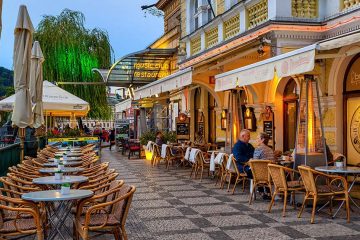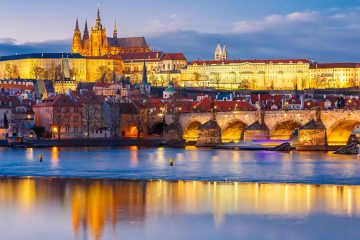Visit Prague and See Why It Rivals the Likes of Paris and London
Take a Stroll Along Cobblestone Streets
Formerly the historical capital of the Bohemian Empire and currently the capital of the Czech Republic, Prague has been a hot spot in Central Europe since medieval times. In fact, the city’s entire center — Old Town, the Lesser Town and the New Town — were declared a UNESCO World Heritage Site in 1992.
Steeped in history and culture, Prague rivals well-traveled cities like London, Rome and Paris, but at a fraction of the price. Despite being surrounded by medieval castles and Gothic churches, travelers on a budget can easily get around on less than $50 a day here.
As a result, Prague tourism was up 7% in 2017 compared to 2016. It continues to top lists as one of the best value cities in Europe, attracting millions of visitors every year.
What to Expect
The Language
While Czech is the official language in Prague, most places of interest and tourism will have English speakers available. Prague has a booming film industry, attracting many Hollywood productions to both shoot and piece together their projects here. As a result, over 7,000 English speaking expats live and work in Prague.
Of course, no matter where you go in the world, it’s always courteous to learn a few key phrases in the local language. Prosím (please) and děkuju (thank you) will go a long way to showing your appreciation for the Czech culture. If you ever get stuck, however, you can ask a young person for help.
World-renowned Charles University is located in the center of the city, which attracts both international students and locals who study in English.
Pick Pocketing
Prague used to have a reputation for pickpockets, especially in high tourism areas like Prague Castle and Old Town Square. Nowadays, it’s less common, but precautions should still be taken just in case. Carry a money purse under your clothing and keep all bags in front of you as much as possible.
At night, avoid Sherwood Forest, the park across the street from the main train station. The homeless population tends to congregate there and can attract some unsavory characters.
Red-Light Districts
Prague also has several mini red-light districts across the city. At night, you might get approached by pimps and prostitutes if you’ve found yourself wandering through Wenceslas Square. Brothels, strip clubs and casinos surround the area so take care, especially if you’re traveling with children.
Things to Do
Charles Bridge
Like many major European cities, a river runs through Prague, separating it into an Old Town on the east side and a Malá Strana or “Lesser Town” on the west side. Joining these two sides are a number of bridges, including the famous Charles Bridge — a historic Gothic bridge decorated with religious statues.
Whether starting from the east or west, a stroll across the bridge is particularly magnificent at sunset when the statues are silhouetted against the sky. In May and June, expect to see fireworks at night — especially during the annual Navalis festival, which honors Saint John of Nepomuk.
Churches and Castles
Architecture buffs won’t want to miss the various Gothic churches and castles around the city such as the Church of Our Lady Before Týn. Located in Old Town Square, the church’s dual towers represent the coexistence of both masculinity and femininity in our world. Nearby, at City Hall, you can also view the Astronomical Clock, a medieval marvel featuring the 12 apostles.
Just north of the bustling Smíchov business and nightlife district sits St. Vitus Cathedral and Prague Castle, Gothic structures from the ninth century. Walking tours abound here, so it does get crowded, but the castle complex is easily accessible by public transport or a hop-on hop-off bus tour.
Modern Architecture
Believe it or not, Prague also has interesting modern architecture, like the Tančící dům, or “dancing house,” designed by American architect, Frank Gehry. The city even has its own mini-Eiffel Tower called Petrin Tower, which has a viewing deck, and nearby attractions like a Victorian mirror maze, castle ruins and an observatory.
Where to Stay
Five-Star
Like most European capital cities, Prague has a variety of accommodation options suitable to every budget. Five-star hotels like Buddha-Bar Hotel Prague and Alchymist Grand Hotel and Spa offer the most comfort and luxury for the price. Expect to pay around $250 a night (including breakfast) for hotels in this price range.
Three- and Four-Star
Three- and four-star hotels are plentiful in Prague, with many centrally located within the city. Modern decor and a tranquil atmosphere are signature qualities for the best in this price range (around $120 a night).
Best bets are The ICON Hotel & Lounge or the Unitas Hotel, which include all the comforts you’d expect from a hotel in the United States — and more — including things like a DVD player and film library.
Hostels
Solo travelers will also want to check out the hostels in the area. Prague has some of the most affordable and comfortable hostels in Eastern Europe. For as little as $12 a night you can have your own tiny room with free WiFi at Hostel Seven in the suburbs of Bubny.
Dormitory-style rooms are also available around this price (per person) in the Jewish Quarter and Old Town, with some like Art Hole Hostel even offering an included breakfast.
Will you be in France on July 14? These are the best Bastille Day celebrations France has to offer. From stunning fireworks displays to foodie gatherings!
Getting Around
About the size of other well-traveled Eastern European capital cities like Budapest — although with a significantly smaller, spread out population — Prague has a relatively efficient public transport system. Trams, metros and buses are the most frequently used forms, and fares are generally interchangeable.
Tickets can be purchased at stations and stops, at tobacco shops and even by using your phone. Transportation tickets are sold in time increments from 30 minutes to 72 hours. A lot of the city is fairly walkable so the shorter timed tickets are the most frequently used. Expect to pay around $1 to $1.50 per ride if traveling short distances under 90 minutes.
You also have the option of using sightseeing buses to get around. Hop-on hop-off buses start at $26 for 24-hour usage of two single routes to nine different parts of the city. You can also add on walking tours of Prague Castle and the Jewish Quarter, in addition to seeing part of the city by boat.
When to Go
Located around the same latitude as parts of Canada, Prague typically has real seasons — moderately warm summers and cold winters. Peak season, then, ranges from April to October when temperatures average around the low 70s. If you don’t mind braving colder weather, you can avoid the crowds and save on both flights and accommodation.
However, tourism picks up again right around the holidays. Prague, like many other European capital cities, hosts festive Christmas markets full of seasonal decorations and merchandise, delicious food and drink, twinkling lights and entertainment.
As with planning any vacation, it’s a good idea to schedule your visit around specific attractions and activities that are a must-see. Prague has a number of political and religious holidays throughout the year, especially in the summer and winter, which may impact when certain things are open.
Figuring out the best time to go will vary from person to person, but in general will depend on the season, activities and price of travel to and around Prague.

